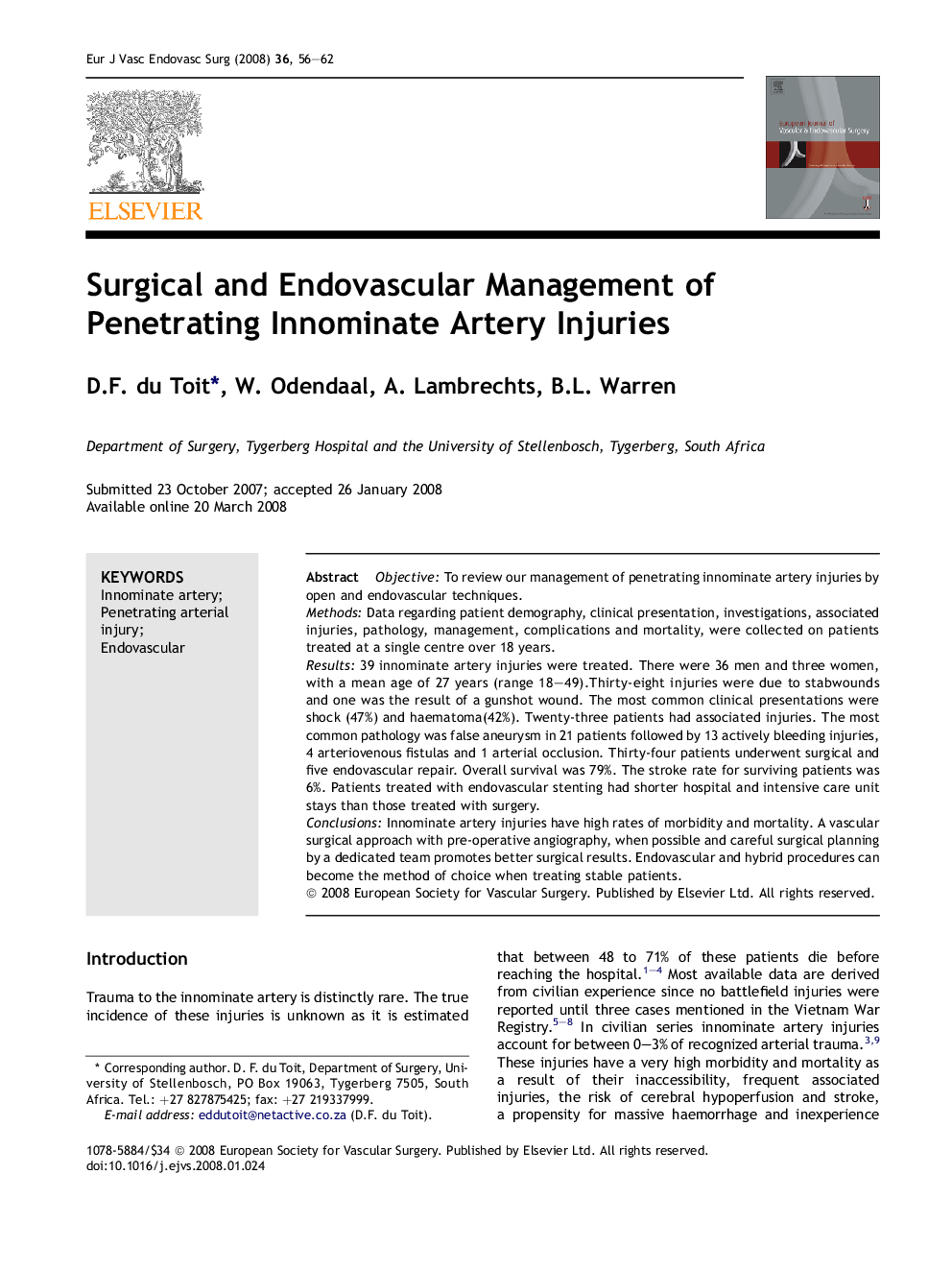| Article ID | Journal | Published Year | Pages | File Type |
|---|---|---|---|---|
| 2914872 | European Journal of Vascular and Endovascular Surgery | 2008 | 7 Pages |
ObjectiveTo review our management of penetrating innominate artery injuries by open and endovascular techniques.MethodsData regarding patient demography, clinical presentation, investigations, associated injuries, pathology, management, complications and mortality, were collected on patients treated at a single centre over 18 years.Results39 innominate artery injuries were treated. There were 36 men and three women, with a mean age of 27 years (range 18–49).Thirty-eight injuries were due to stabwounds and one was the result of a gunshot wound. The most common clinical presentations were shock (47%) and haematoma(42%). Twenty-three patients had associated injuries. The most common pathology was false aneurysm in 21 patients followed by 13 actively bleeding injuries, 4 arteriovenous fistulas and 1 arterial occlusion. Thirty-four patients underwent surgical and five endovascular repair. Overall survival was 79%. The stroke rate for surviving patients was 6%. Patients treated with endovascular stenting had shorter hospital and intensive care unit stays than those treated with surgery.ConclusionsInnominate artery injuries have high rates of morbidity and mortality. A vascular surgical approach with pre-operative angiography, when possible and careful surgical planning by a dedicated team promotes better surgical results. Endovascular and hybrid procedures can become the method of choice when treating stable patients.
